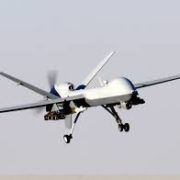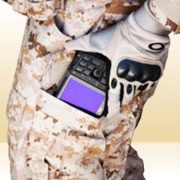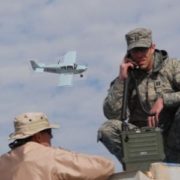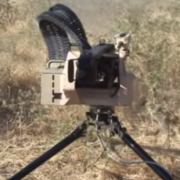 The unmanned community has been demoralized by the tightening of the Defense money spigot. Specifically, many are concerned that American leadership in this important field will fall behind as the Defense funding decreases. In a previous post, this blog reviewed “The Looming Robotics Gap” (Foreign policy) and found its fears of failing American unmanned superiority unwarranted.
The unmanned community has been demoralized by the tightening of the Defense money spigot. Specifically, many are concerned that American leadership in this important field will fall behind as the Defense funding decreases. In a previous post, this blog reviewed “The Looming Robotics Gap” (Foreign policy) and found its fears of failing American unmanned superiority unwarranted.
However, it’s hard to keep a depressing idea down. A more recent article, “Do Drones have a future?” (War on the Rocks), written by Paul Scharre, an expert with the prestigious and influential think tank Center for a New American Security, maintains the steady drumbeat of fear about American decline.
The two articles have much in common. They both complain of the restriction of unmanned systems to niche areas (technological ghettos), and the hostility of the pilot culture to Unmanned Aerial Vehicles (UAV). Both used detailed information to support their points. Whereas the earlier Foreign Policy article focused on competition by nation states and the threats posed by widespread commercialization, the later article is mostly concerned with attitudes within each military service. Although, I remain skeptical of the alarm raised by the Scharre’s article, I do appreciate its comprehensive overview of each service branch. You can follow the above link to read the whole article, or read my summary and analysis below.
Air Force
Considering the Air Force is the epitome of pilot culture that has restricted the development of unmanned systems, Scharre is surprisingly mild in his assessment of this service branch. He is especially complimentary of the Air Force’s new Remotely Piloted Aircraft (RPA) Vector. However, he criticizes it for not being funded.
Rob Culver, AMREL’s Director of Business Development Programs (DOD), who has many years of experience in procurement, finds this criticism wanting.
“For one thing the Vector document is not meant to be funded” he explained. “It is a ‘Vision and Enabling Concepts’ document. It is for ‘Guidance’.”
Culver also sees the debates about the role of unmanned systems as typical for new technology.
“In some ways it mirrors the advent and adoption of armor versus horse cavalry, fixed wing aircraft versus rotary wing aircraft,” he argues. For a discussion about the adoption of machine guns, he recommends Grim Reaper: Machine-Guns and Machine-Gunners in Action by Roger Ford.
Scharre disparages the Air Force for not making the top position in overseeing unmanned systems a pathway to promotion. He also advocates deploying autonomous, multiple, low cost, “expendable” UAVs in swarms. It is not clear from the article if the Air Force is considering this or if Scharre is mentioning it, because he thinks it’s a good idea.
Army
Compared to the Air Force, the influence of pilot culture in the Army is minimal. Perhaps, this is why, according to Scharre, that it is furthest along in integrating unmanned systems. He praises (rightly, in my opinion) the development of unmanned-manned teams.
He also discusses swarms again. Specifically, he criticizes the lack of funding for autonomy research. Culver counters that there is funding for this (at least DARPA is doing research), and wonders if Scharre’s pro-swarm agenda is the real point of this article.
Navy
In his discussion of the Navy, Scharre resists the urge to mention swarming. He does criticize the specifications of Navy’s Unmanned Carrier-Launched Airborne Surveillance and Strike (UCLASS). He writes that they are not “relevant against more sophisticated adversaries” (the “adversaries” to which he is obliquely referring consist of a large unidentified Asian country, whose name rhymes with “Dinah”). He also voices the often-heard suspicion that the Navy deliberately downgraded the requirements, so as to not compete with next generation of manned fighters.
Both Culver and I think Scharre is jumping the gun in regards to UCLASS. The program is a work in progress, and the Navy has a process to follow through.
Frankly, I am amazed at the amount of progress that the Navy has already made. One of the most difficult missions in the military is using a maritime platform for the deployment of combat aircraft. The fact that the Navy has already landed a UAV on a carrier suggests that they are not dragging their feet on unmanned systems.
Marines
The Marines do not have a lot going on with unmanned systems. They don’t like using the assets of other services, but their amphibious boats do not have much room for additional equipment. Perhaps, the Marines would be more enthusiastic about adopting robots if they could find one that boasts that it’s tougher than all the other unmanned systems.
Conclusion
Scharre concludes that we are all doomed. Well, no, he doesn’t actually write that. In fact, he outlines a sophisticated vision for the role of unmanned systems, and warns that the US lead is “fragile.”
Both Culver and I feel that Scharre made some interesting points, and agree with most of what he said. We are a little dubious of some of his criticisms and feel that the adoption of unmanned systems is facing obstacles similar to ones that challenged other new technologies in the past. Despite their skeptics, machine guns, airplanes, and armored vehicles have a firm place in modern forces. So will unmanned systems.
Speaking for myself, I am glad that the unmanned community has advocates like Scharre. However, I still feel that in spite of bureaucratic obstinacy and funding problems, the US is in an excellent position to maintain unmanned dominance for some time to come.
To learn more about DoD’s unmanned plans, contact
Rob Culver at (603) 325-3376 or robertc@amrel.com



















